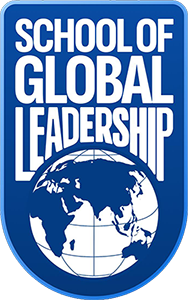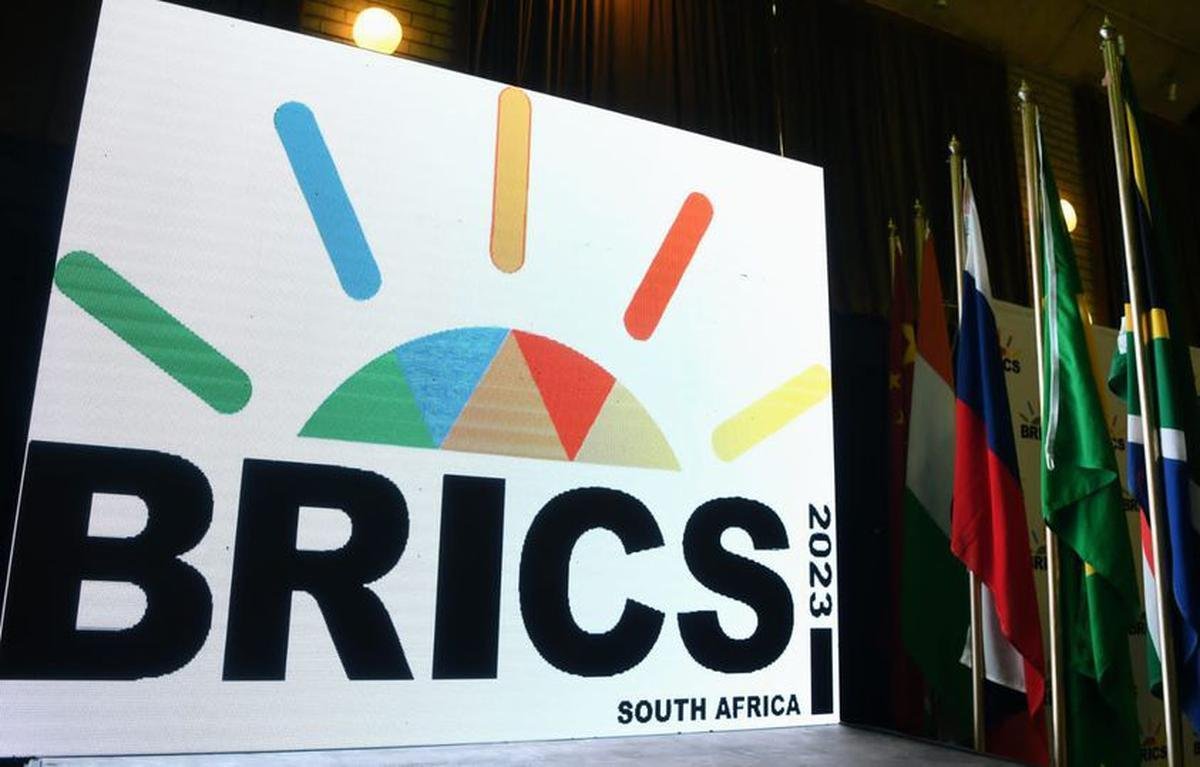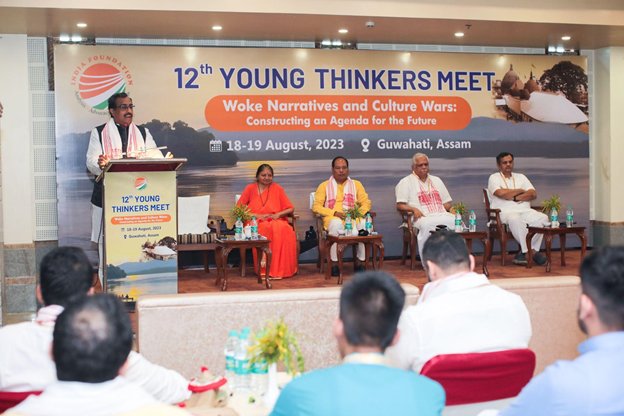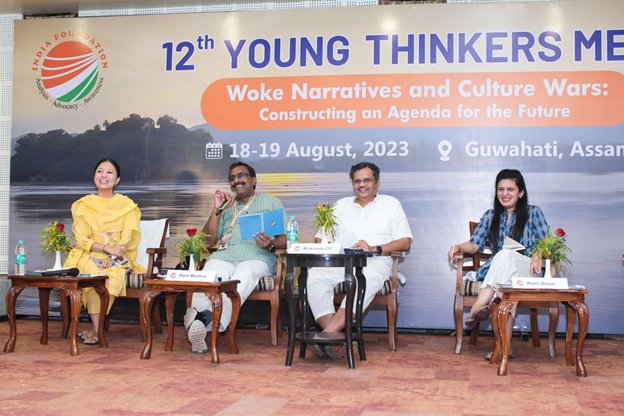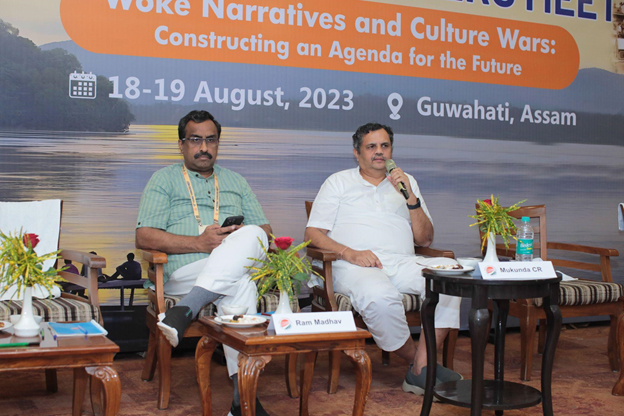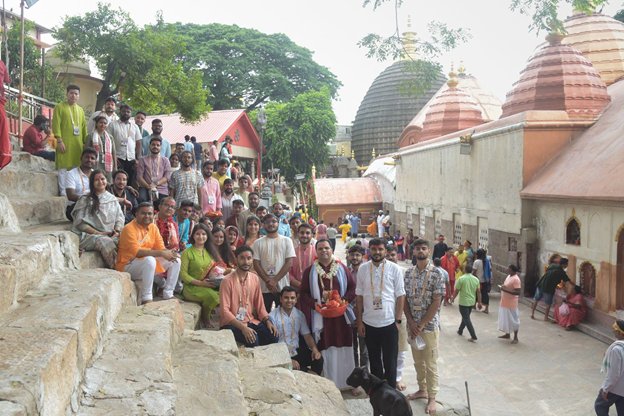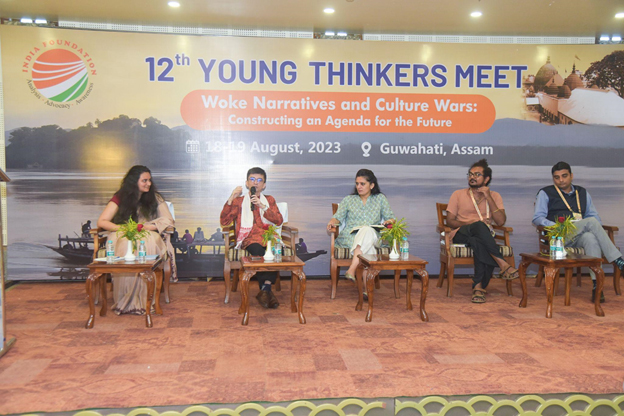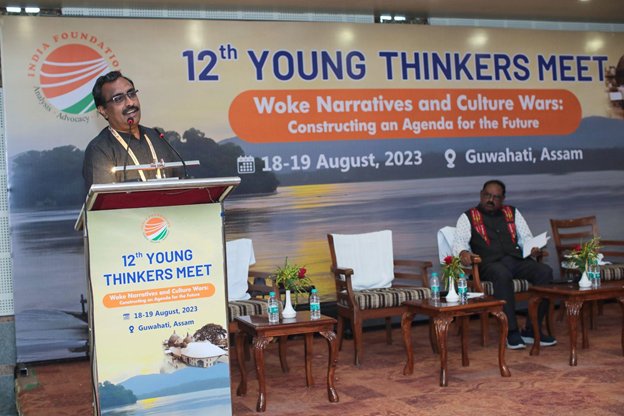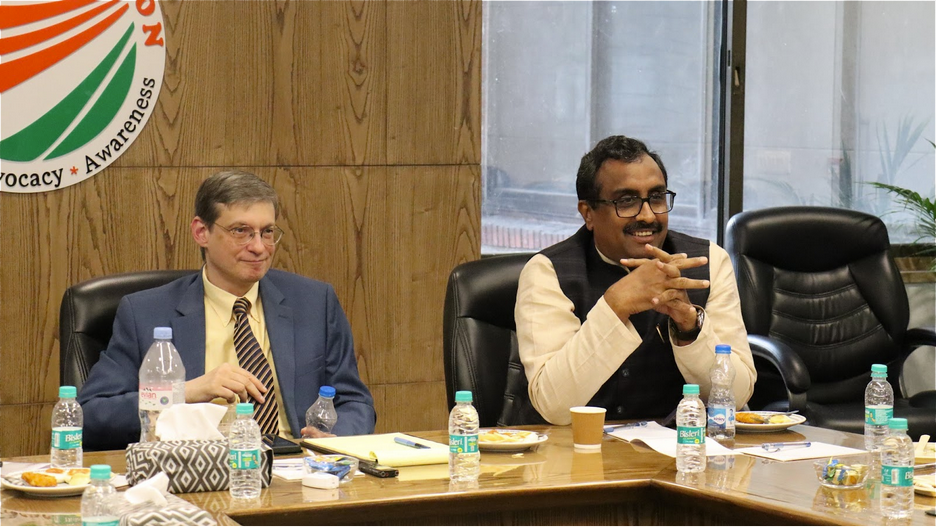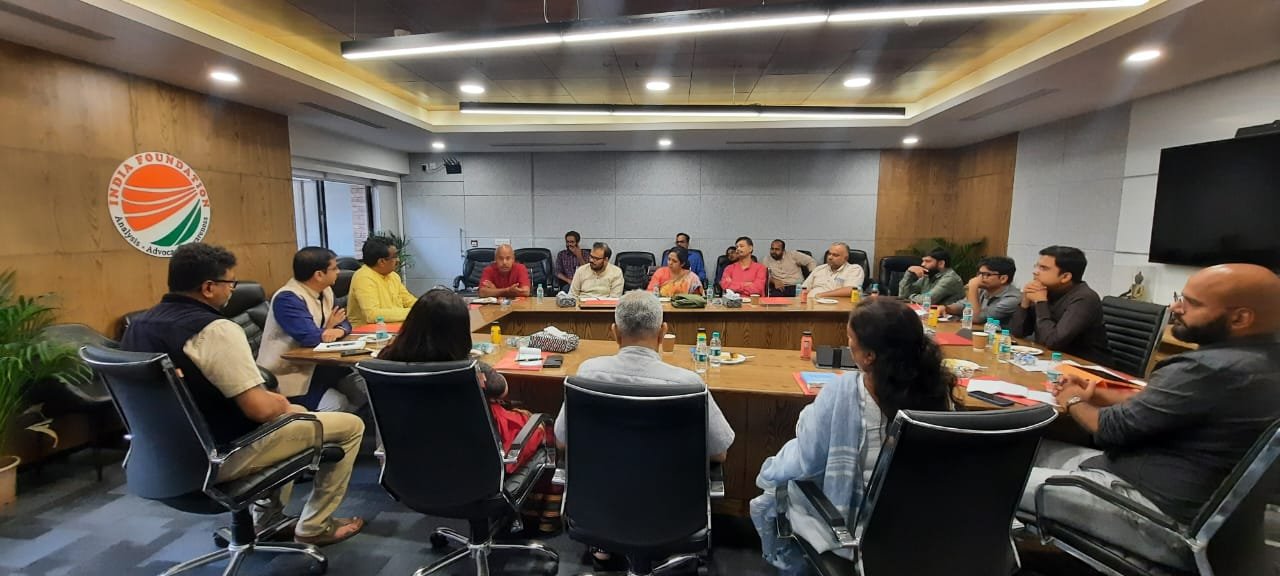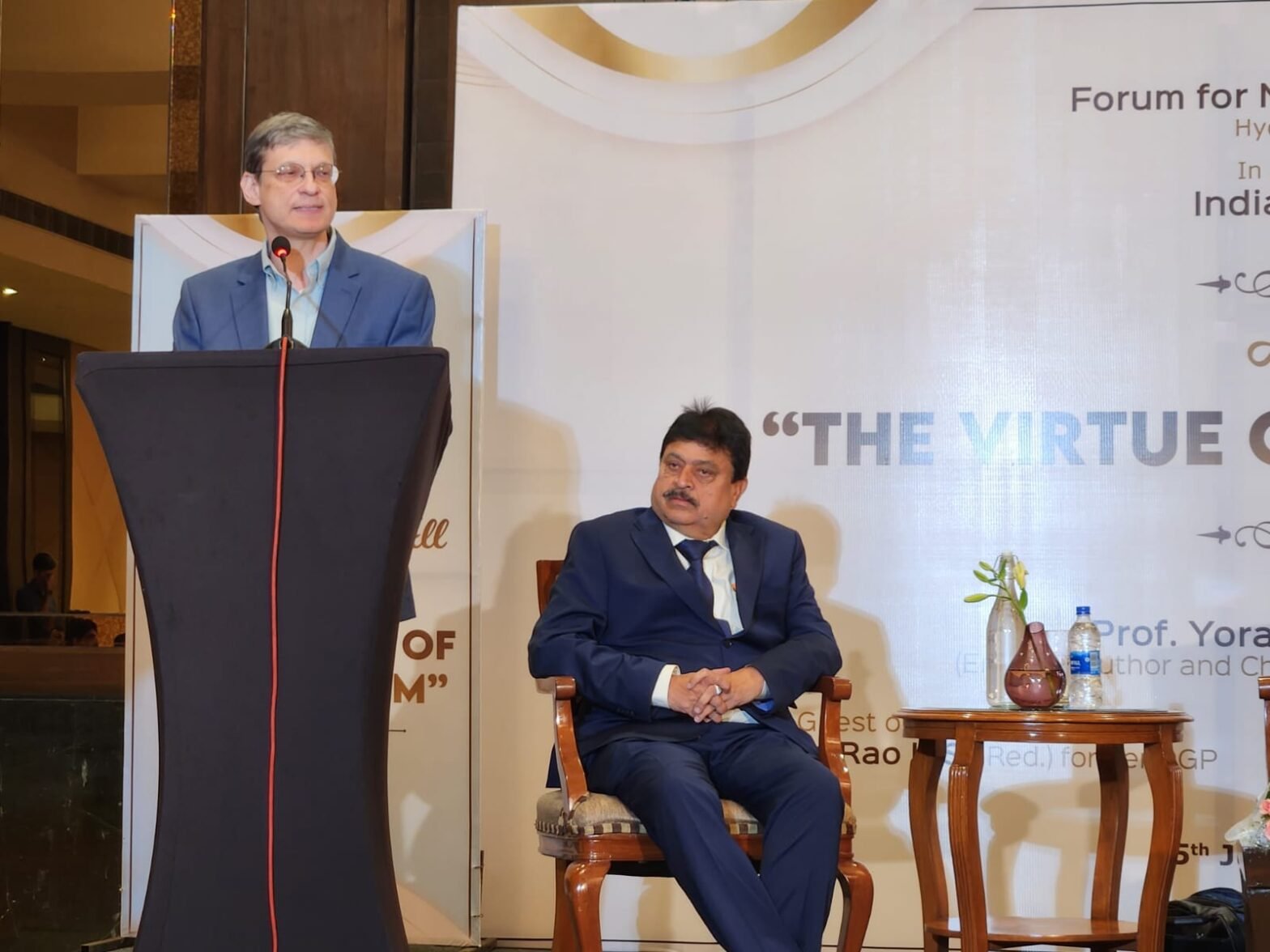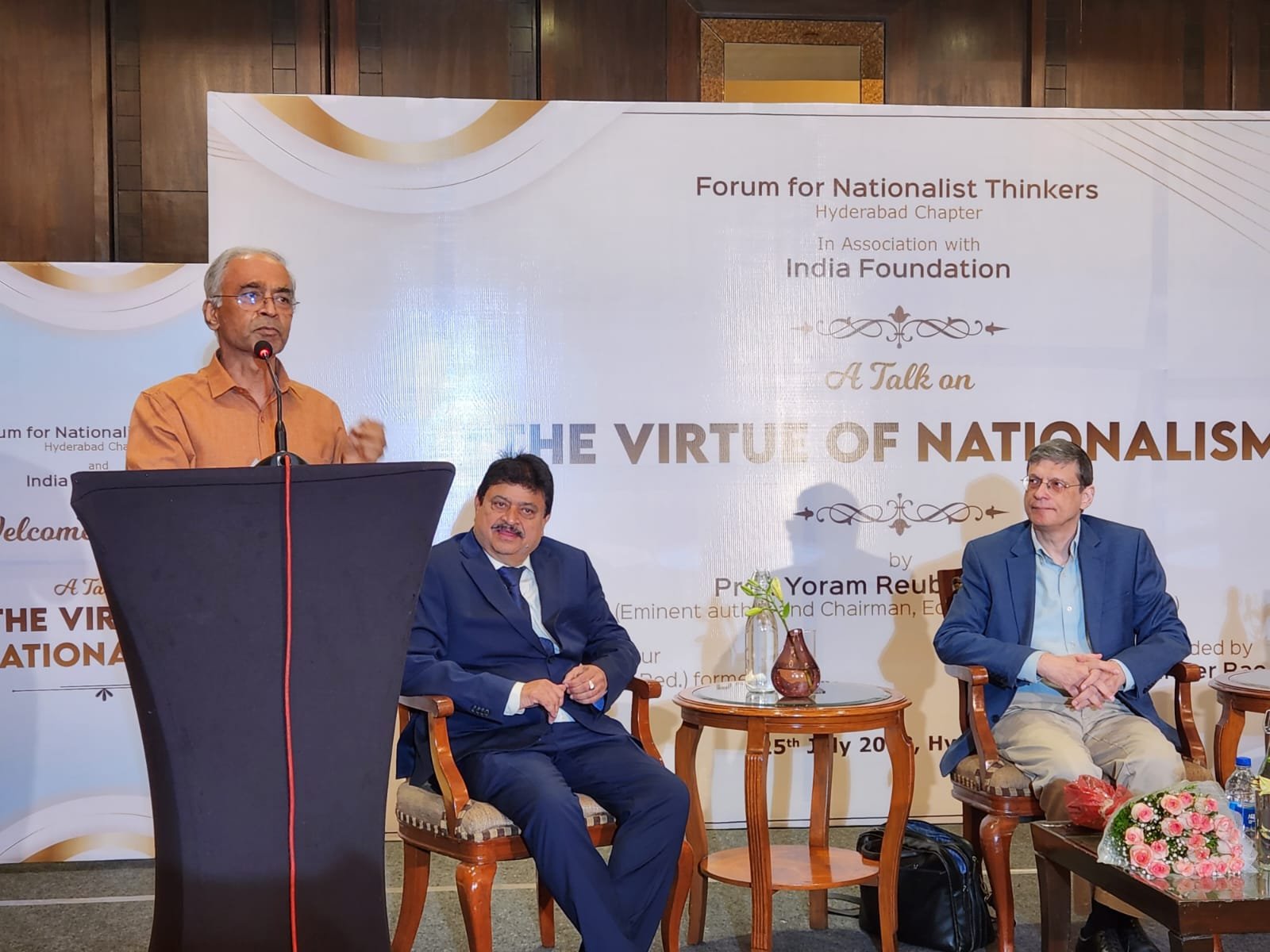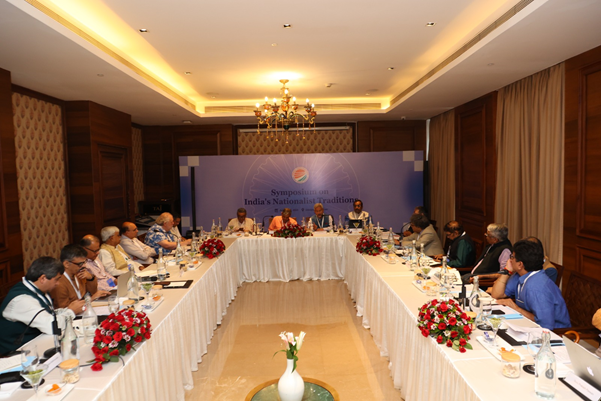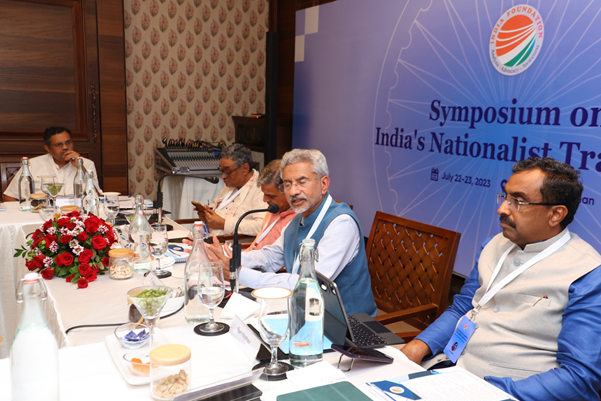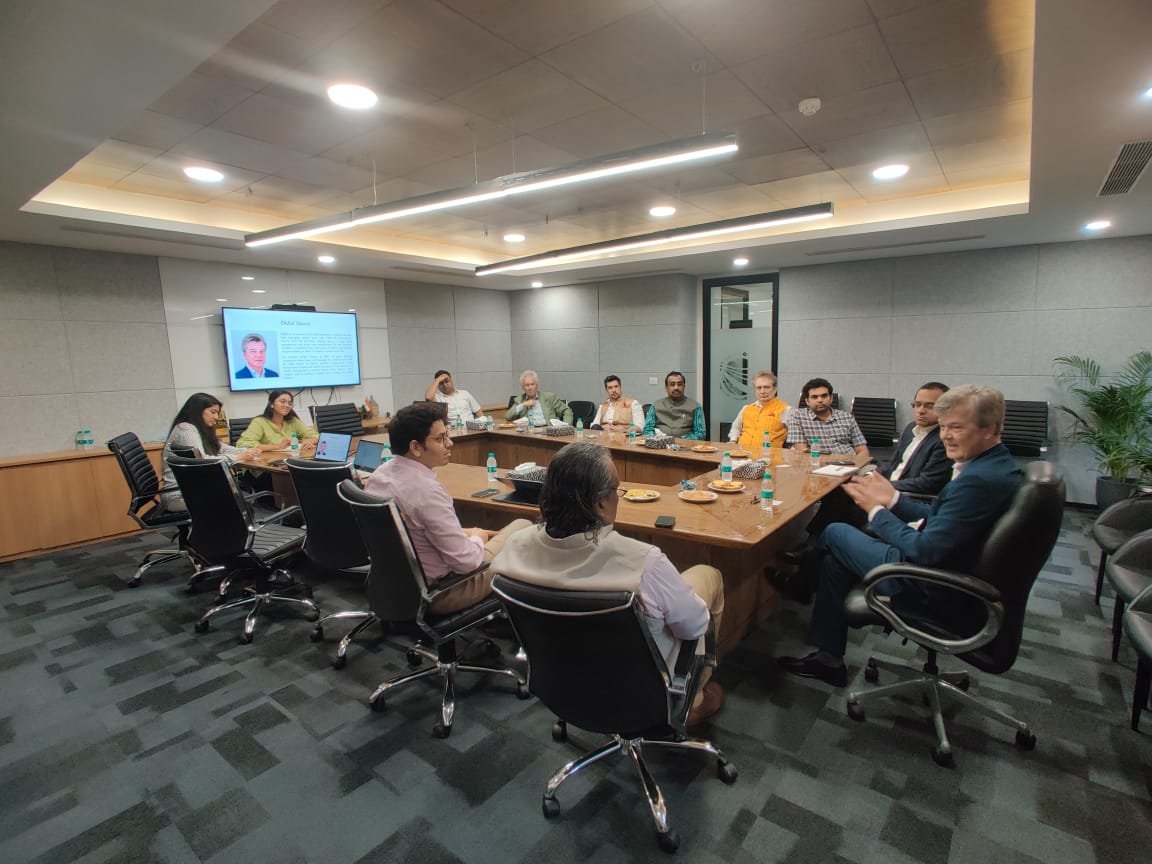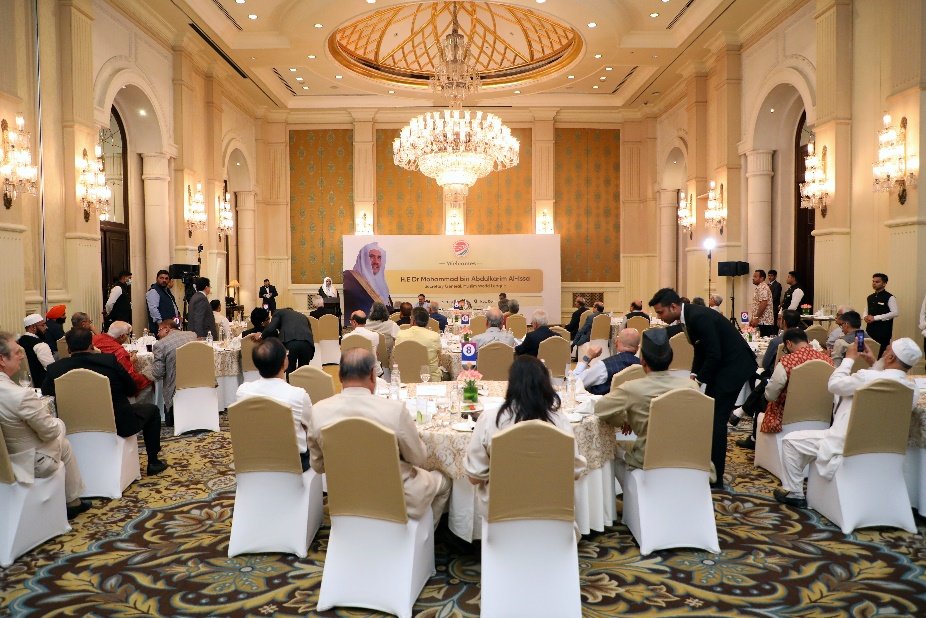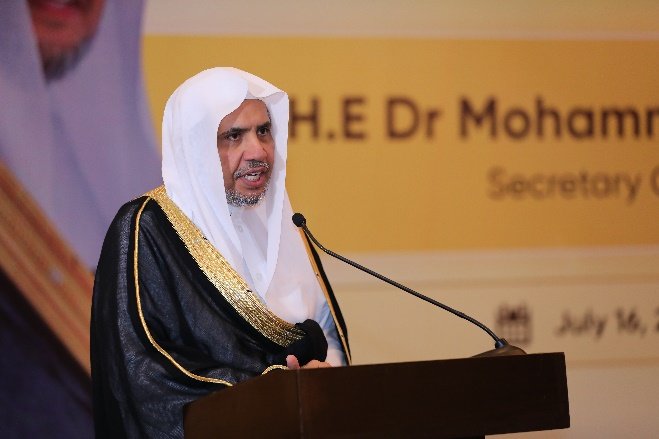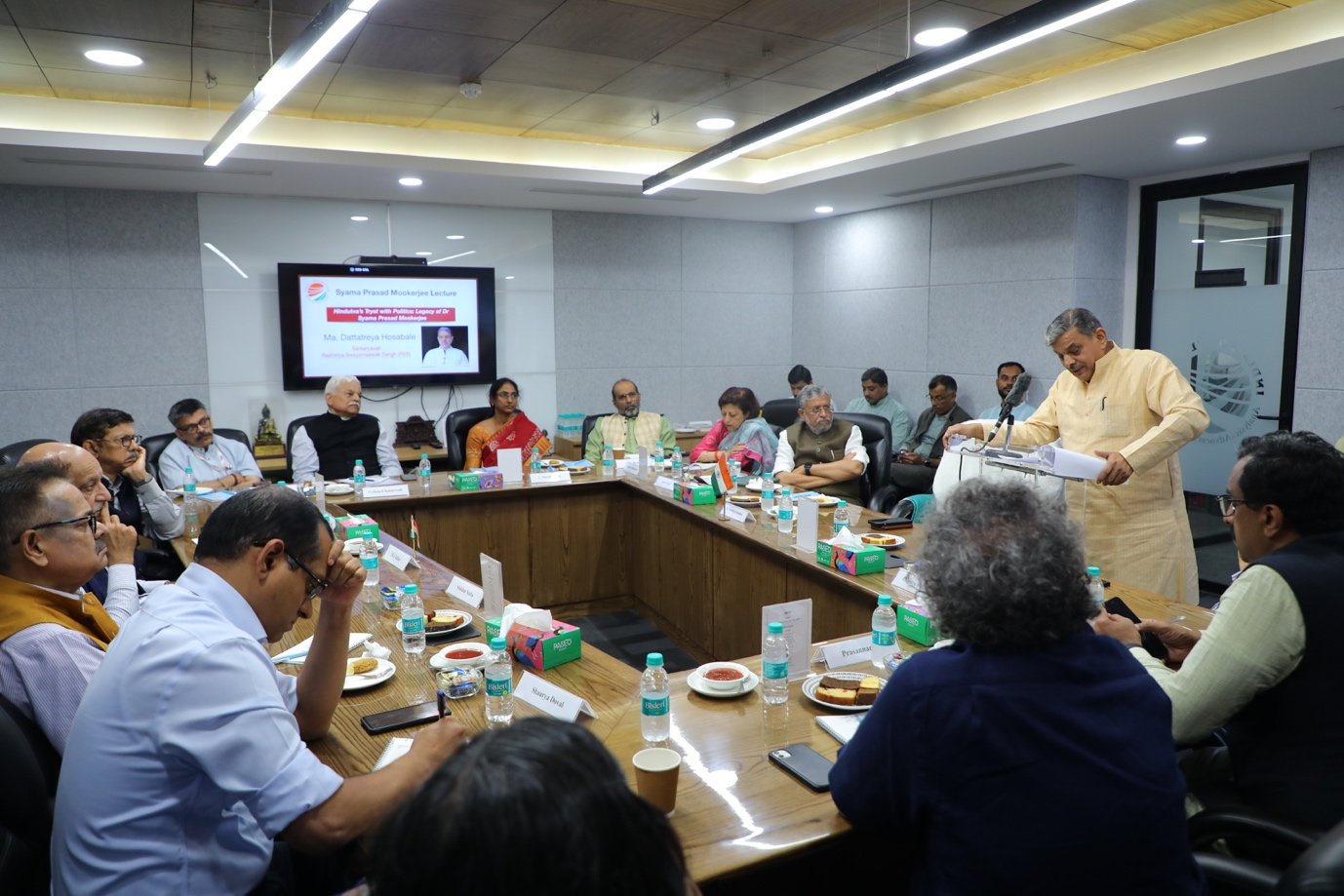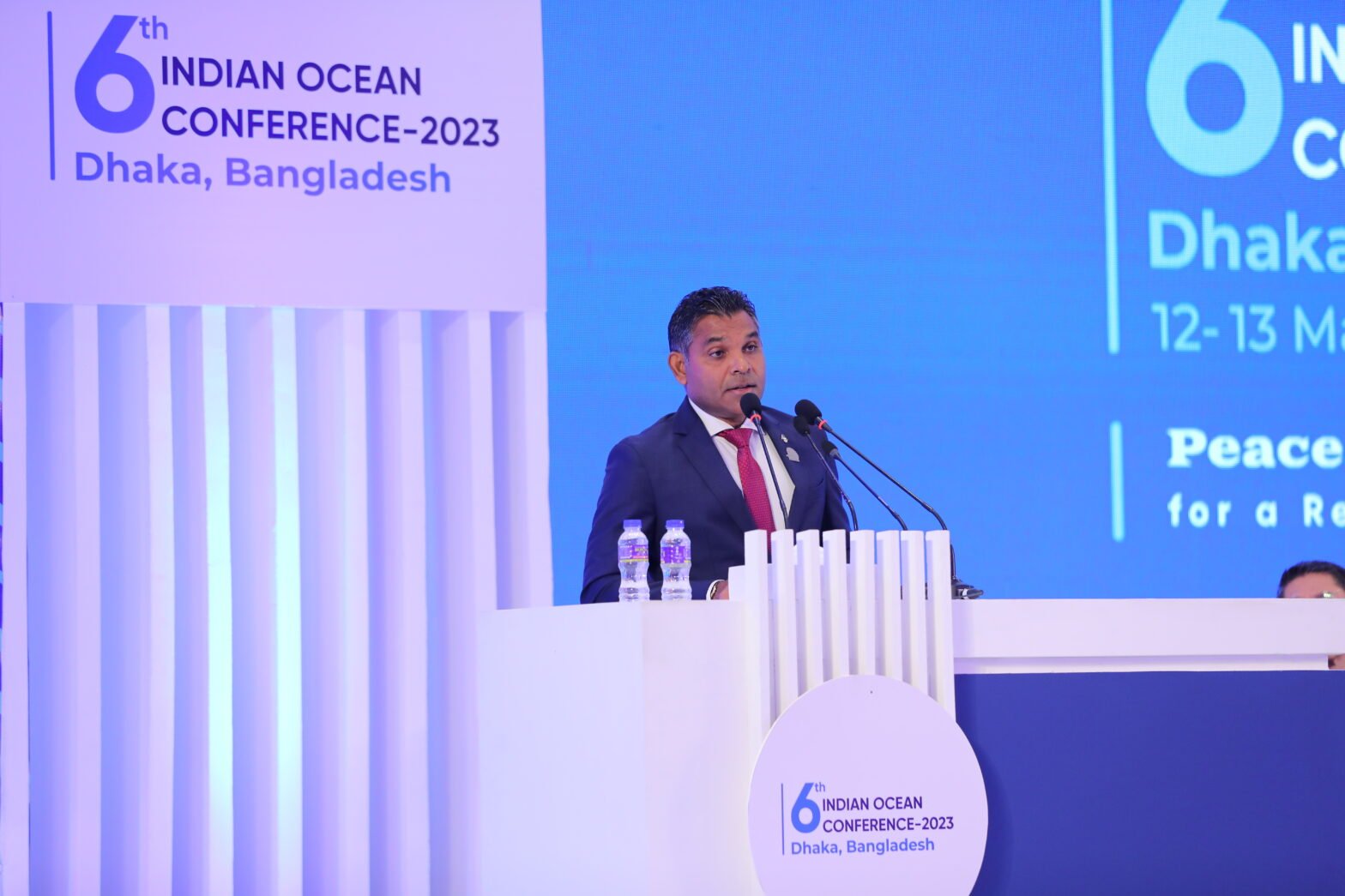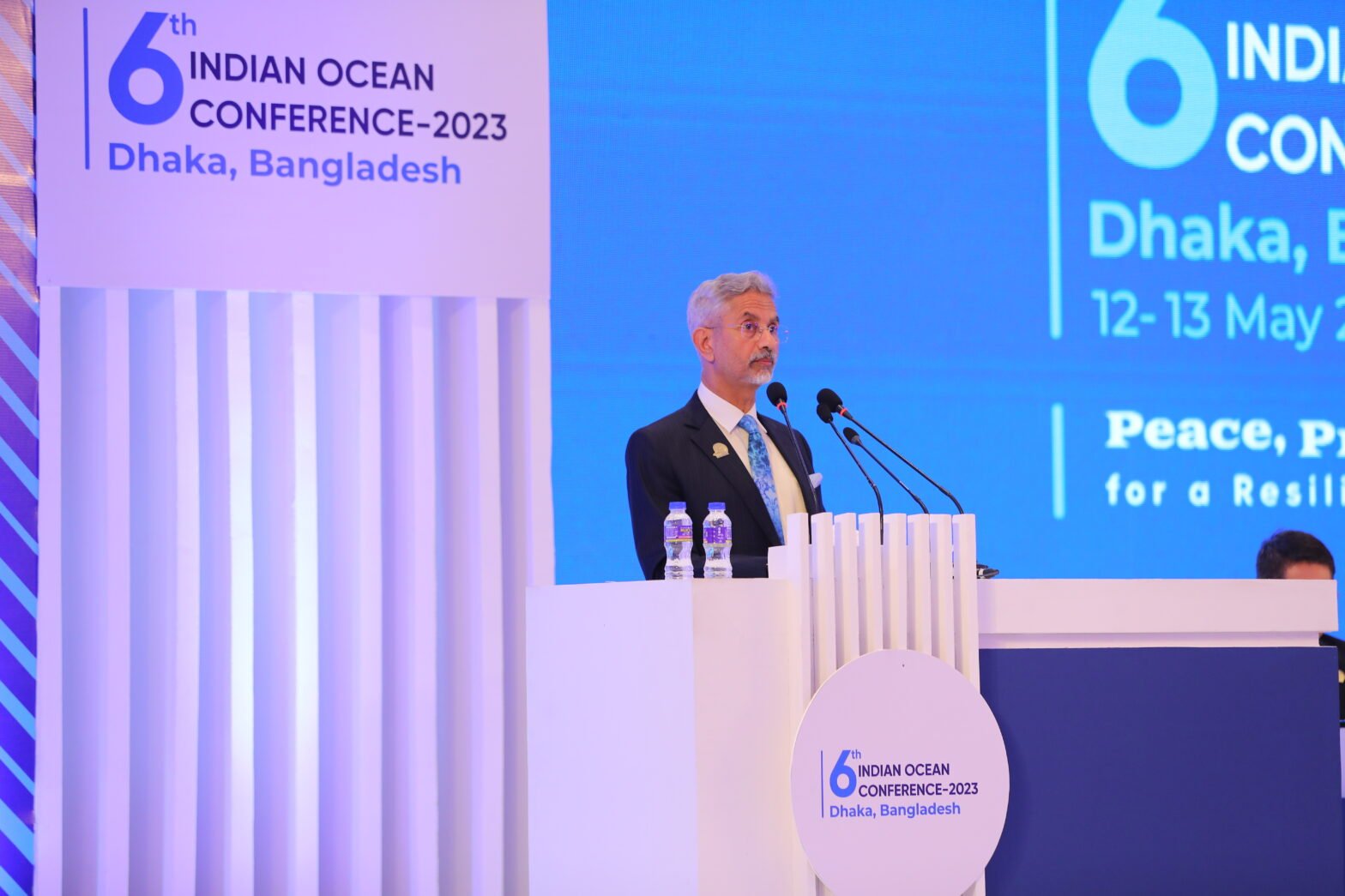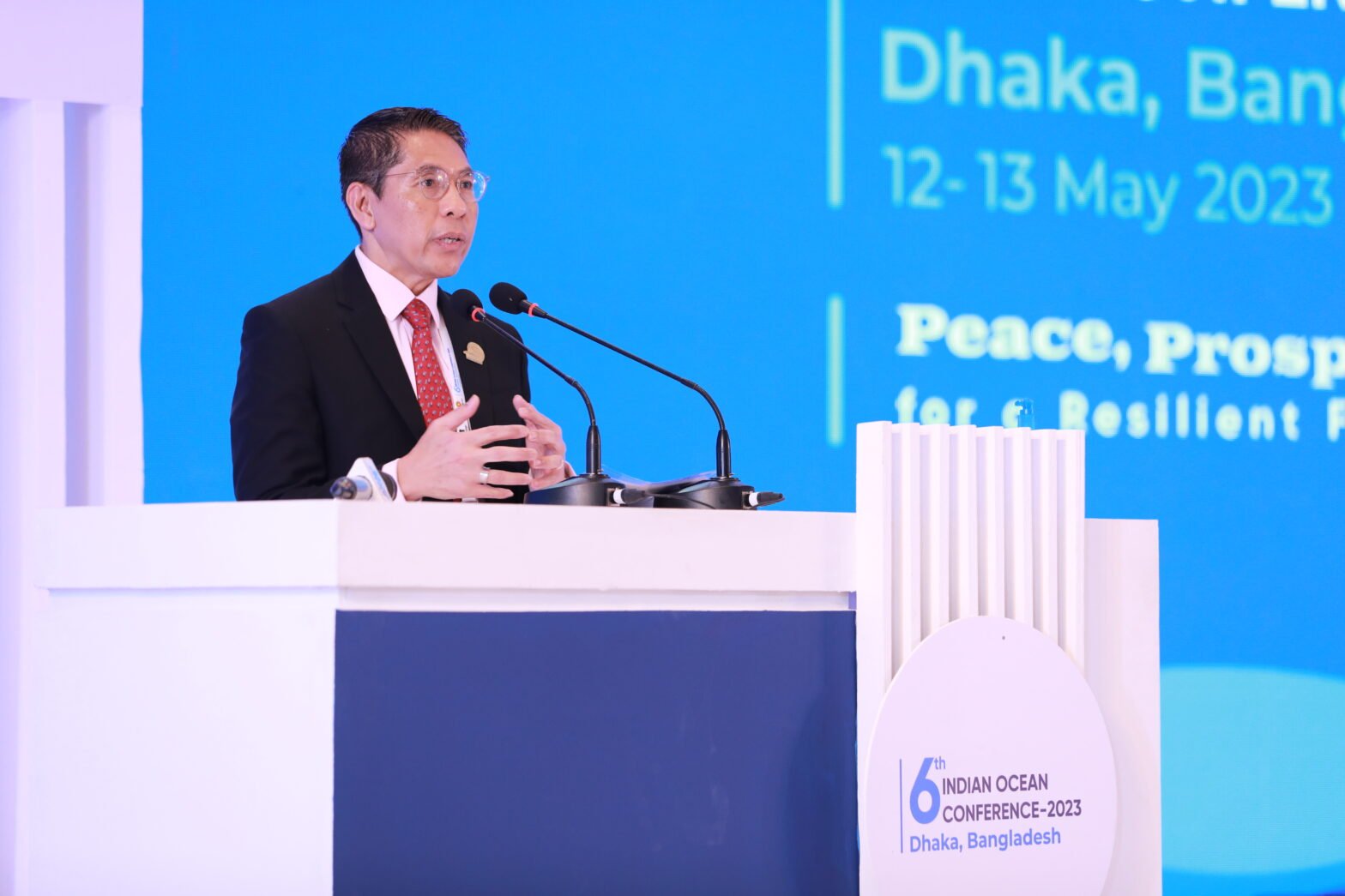Introduction
Among the world’s most important and influential multilateral groupings, BRICS is invariably noticed as a club of emerging economies – three from Asia (China, India, Russia) and one each from Africa (South Africa) and Latin America (Brazil). It is perceived as a counterweight to G7, the grouping of the developed nations. Notably, a BRICS member (China) has become the world’s second-largest economy and another member (India) is the fifth-largest economy.[1] BRICS and G7 are key pillars of G20, the premier international economic forum, with India holding the latter’s presidency in 2023, which will move to two other BRICS members (Brazil and South Africa) in 2024 and 2025 respectively.
As a grouping of five nations, BRICS represents 27% of the world’s land area, 42% of the population, 16% of international trade, 27% of global GDP in nominal terms, and 32.5% in PPP terms. Heading to its 15th summit to be held in Johannesburg on 22-24 August 2023, it draws international attention not only for its past record of achievements and failings but also for its internal dynamics and new challenges. These include the impact of the COVID-19 pandemic and Ukraine conflict, proposed expansion and other aspects of institutional development, and its management of economic cooperation among its members as well as in relation to the Global South. A comprehensive assessment of the relevant facets of BRICS as an institution, during its journey from September 2006 to July 2023, is offered below as a means to explain what is at stake at the forthcoming summit.
That the BRICS’ journey has been a fascinating one is beyond doubt. But the question of whether BRICS, in its second decade, will achieve its optimal potential remains intensely debatable. The acronym ‘BRIC’ was coined by Jim O’Neil of Goldman Sachs in 2001, predicting that the four fast-growing economies (of Brazil, Russia, India and China) would collectively dominate the world economy by 2050. However, the BRICS of today has evolved quite differently. Three milestones in its initial trajectory are particularly noteworthy: September 2006 when the foreign ministers of Brazil, Russia, India and China met in New York on the sidelines of the UNGA session to launch a new grouping; June 2009 when the first BRIC summit was held in Yekaterinburg, Russia; and April 2011 when South Africa attended the summit for the first time, giving to the group its current name – BRICS.
BRICS will turn into an adult at 18, next year. When its top leaders[2] meet at the Sandton Convention Center, Johannesburg in August 2023, they will tackle the principal challenge of retaining its basic cohesion and internal solidarity while increasing its impact and influence in the world today. They will do so against the backdrop of the ongoing overarching US-China strategic contestation and the impact of other geopolitical developments.
Goals, driving impulses
The early formative years of BRICS witnessed the decline of the US-led G7 dominance and the imperative compulsion of the industrialized West to engage emerging economies, especially China, for helping resolve the 2008 global financial crisis. The BRIC foreign ministers in 2006 foresaw the need for greater multipolarity. The elevation of G20 to the highest political level in 2008 was a step in that direction. The first BRICS summit in 2009, therefore, called for “a more democratic and just multi-polar world order” and advocated peaceful resolution of “disputes in international relations.” It also articulated its commitment to “advance the reform of international financial institutions, to reflect changes in the global economy.” Above all, it stressed “the central role of G20 summits in dealing with the financial crisis.”[3]
Besides, BRICS covered other important issues such as improvements in multilateral trade systems, implementation of the concept of sustainable development, the pressing needs of developing countries (e.g., increasing development assistance, debt relief, etc.), counter-terrorism, and commitment to multilateral diplomacy.[4] All these themes became integral elements of subsequent summits and of their outcome documents.
As the following decade unfolded, the annual summits, held with remarkable regularity, explored many other dimensions of international economic and political questions, articulating the shared perspectives of the five member states and pushing for a coordinated approach. They also created multiple platforms for internal cooperation on a wide range of issues stretching from macroeconomics, trade and investment to health, agriculture, crime and corruption. The BRICS agenda has continuously expanded. As John Kirton, director of the BRICS Research Group at the University of Toronto, noted, “The summit communiqués; have grown in length from just under 2,000 words in 2009 to a peak of 22,000 in 2014, then declined to 8,400 in 2018.”[5] He also pointed out that between 2009 and 2021, BRICS leaders made “844 commitments” pertaining to international cooperation, development, regional security, trade, digital economy, and other issues.
Achievements, disappointments
BRICS had a fairly decent record of progress to show in its first decade (2006–16). It crafted and projected a non-Western view of the world; strengthened multipolarity by serving as a bridge between the Global North and the Global South; helped in improving emerging economies’ quotas in IMF and World Bank; and created the New Development Bank (NDB) and the Contingent Reserve Arrangement (CRA). It also focused on its broad ambition to deploy “all policy tools” and adopt “innovation-driven development strategies” to enhance the resilience and potential of BRICS economies and contribute to the global economy.[6]
Yet BRICS has disappointed its supporters on several counts. A clear majority of its members (Brazil, South Africa and India) has been dismayed by the minority view (of Russia and China) on the reform of the UN Security Council. The minority group failed to support the case for permanent membership of the IBSA nations and refused to move beyond a frozen formulation.[7] Countless meetings of BRICS leaders, ministers and others and endless reams of documents produced have not been backed by adequate tangible action. BRICS summits executed ‘outreach’ by convening meetings of leaders of the host country’s neighbours (such as BIMSTEC in 2016) or even of a larger international group such as the one convened by China in 2018. Yet BRICS provided little concrete assistance to these guest countries, except probably giving them the satisfaction of being associated with an important multilateral forum. From this arose the momentum for the expansion of BRICS.
Internal dynamics
Intra-BRICS dynamics need to be taken into account in assessing its present and future trajectory. In theory, all five members are equal, guided by mutual respect and shared interests that bind them together in the quest for common goals. In reality, an obvious asymmetry marks their relationship: China’s contribution to the world GDP is bigger than the GDP of the other four combined.[8] Besides being the world’s second-largest economy, China nurtures ambition and displays an aggressive drive to become the No.1 power, displacing the U.S. This has created complications in Asia, especially for India. After the bloody clash between Chinese and Indian troops in the Galwan Valley in June 2020 and the failure of bilateral diplomacy in the past three years to resolve contentious issues, China-India relations remain seriously strained.[9] The resultant trends in India’s foreign policy to strengthen relations with the West, especially the U.S. and France, and to consolidate the Quad in the Indo-Pacific have caused much annoyance to Beijing. To think that BRICS can be insulated from these geopolitical developments is to expose one’s naivety.
The war between Russia and Ukraine which broke out in February 2022 proved to be another source of tensions within the BRICS. Despite its close strategic partnership with Moscow, New Delhi chose to adopt a calibrated position – one favouring diplomacy and dialogue rather than siding openly with one or the other party to the conflict. China swore by respect for territorial integrity and national sovereignty and postured to serve as a mediator, though it has in fact supported Russia, given its “no limits” partnership with it. Brazil and South Africa too have been adversely affected by the conflict, coming under heavy Western pressure to condemn Russia. With Moscow’s failure to decisively win the war so far, compounded by internal problems exposed by the Wagner Group’s alleged ‘mutiny’, Russia stands as a beleaguered power today. A comparatively weaker Russia, increasingly dependent on China, is a recipe for increased imbalance within the BRICS. Insiders point out that the two nations often act as a sub-group within the grouping.
The other three nations – India, South Africa and Brazil – are linked through a common allegiance to the IBSA Dialogue Forum. As leading democracies of three continents, which clearly belong to the Global South, they have more in common among them than the authoritarian governance system of Russia and China’s one party regime. However seasoned observers note that the IBSA members are far from pulling their weight together in order to ensure a better equilibrium within the BRICS.
In short, the five BRICS members need to first improve their internal dynamics and consolidate their inner cohesion, while seeking to address regional and global challenges. Otherwise, their hyped-up rhetoric and verbosity may prove ineffective in the real world.
Johannesburg – key issues
In the foregoing context, the 15th summit at Johannesburg assumes considerable significance. Its signature theme is “BRICS and Africa Partnership for Mutually Accelerated Growth, Sustainable Development, and Inclusive Multilateralism.” How it handles certain key issues will be watched with widespread interest.[10] These are analyzed below.
Expansion of the membership of BRICS is perhaps the No. 1 issue. The Foreign Ministers’ meeting in Cape Town in June, and the Sherpas’ meeting in Durban in July accorded primacy to it. They attempted to develop consensus on “the guiding principles, standards, criteria and procedures for this expansion process,” as directed by the leaders at the 14th summit.[11] At the end of the Sherpas’ Durban meeting, Ambassador Anil Sooklal, the South African sherpa, announced that the five sherpas were “highly satisfied that we have produced a good report and outcome document.”[12] This was interpreted to mean that a broad agreement was reached among the officials, though it was subject to collective approval by the top political leaders.
What are the likely contours of this agreement? Two facts are clear: first, at least 19 countries (later increased to 22) have expressed interest in one form or another in joining the BRICS[13]; and second, disagreement among BRICS members existed, with China and Russia perceived as pushing for rapid expansion, while Brazil and India advocate a cautious, go-slow approach. South Africa found itself somewhere in the middle but was generally inclined to accept several new members. In reality, it was learned later that China was, after all, not in a tearing hurry to widely open the gates of membership; that Brazil, in particular, strongly favoured a restrictive approach; and, that Russia reportedly preferred expansion “but without any huge enthusiasm.”[14] As a result, gradualism and caution may be adopted as the way forward so that existing inner cohesion and geographical balance are not disturbed.
What the summit decides on this issue will be known on 24 August 2023. It is likely to announce the agreed criteria for new membership, which paves the way for the entry of a small number of new countires from Latin America and Africa. Those chosen from Asia would especially require the concurrence of all three Asian powers – China, Russia and India. Another point of agreement could be that new entrants are not given full membership at the outset. They may first be ‘socialised’ into the BRICS philosophy and political culture as ‘dialogue partners’. A few years later, they may be allowed to join the forum as members. In other words, the SCO model may be followed by BRICS as far as expansion is concerned. A South African scholar observed that the expansion was “ultimately unavoidable” but its value lay in its “deep symbolism, complementarity and agency.”[15]
The G20 summit, to be hosted by India in September 2023, may figure prominently in discussions at Johannesburg. BRICS has been a steady and strong supporter of devising global solutions through the instrumentality of G20. However, during the Indian presidency, it has been extremely difficult to produce the consensus documents at preparatory Ministerial meetings, mainly due to the insistence by Russia and China to exclude the two paragraphs on the Ukraine conflict, which they had accepted at the G20 Bali summit in November 2022. On the other hand, the other three BRICS members have had no difficulty in agreeing to the said paras. Thus, the split in BRICS ranks on this score is complete. Johannesburg will almost be the last opportunity to craft an agreed formula that creates a pathway for a consensus-based Delhi Declaration of G20, a fortnight later.
Ukraine per se and the conflict’s adverse effects on the economies of the Global South will receive pointed attention in Johannesburg. The African Leaders’ Peace Initiative, which took South African President Cyril Ramaphosa and others to Moscow and Kyiv in June 2023 and its outcome will no doubt be discussed. But it will not be easy to devise unanimous formulation on Ukraine, given the internal divergences. It is noteworthy that the 14th BRICS summit adopted a fairly general formulation.[16]
The New Development Bank (NDB), gradually emerging as a success of BRICS, may come under the Leaders’ lens. The grouping is proud of the NDB’s record, but the latter is thinly capitalized at $100 billion and is known to be facing financial constraints. This is important to correct, as BRICS leaders eye with concern the burden of rising expectations from a large number of developing countries that need funds for development. The bank, therefore, needs to expand its capital base.
A common BRICS currency has received intense media attention, in the buildup to the Johannesburg summit. It may almost be viewed as a media creation, reinforced by some remarks made by Brazilian and Russian officials. A common currency such as the Euro is the end product of a high level of financial integration attained by the European Union (EU) over a long period. BRICS is nowhere near that kind of achievement. Anil Sooklal, South African sherpa, observed, “There’s never been talk of a BRICS currency, it is not on the agenda.”[17] In June 2023, India’s External Affairs Minister S. Jaishankar stated that currencies would remain “very much a national issue for a long time to come.”[18] What BRICS officials have been striving is to create a system for settling trade transactions in their national currencies, probably in separate bilateral formats. Further, efforts to encourage the ‘BRICS Interbank Cooperation Mechanism’ will continue to play an important role in facilitating economic and trade cooperation. Some progress can be expected, but it is clear that the enthusiasm of the Russians, Chinese and Brazilians to move towards de-dollarization is neither shared by the other members nor do objective conditions exist for a common BRICS currency at present. “Pressure from Russia, looking to escape sanctions, and perhaps China looking for a larger global role, not to mention Brazil’s Lula, could drive a push for a BRICS currency,” noted Peter Fabricius, a consultant with Institute for Security Studies Africa. He added, “But it’s too soon to put the greenback on the endangered list.”[19]
Among other issues, deliberations at Johannesburg may push for positive movement on several ideas that figured in the BRICS’ Beijing Declaration of June 2022 such as the participation of Emerging Markets and Developing Countries (EMDCs) in the international economic decision-making and norm-setting processes; support for the African Union’s Agenda 2063 and Africa’s efforts towards integration through the development of the African Continental Free Trade Area (AfCFTA); there may also be renewed focus on the grouping’s endeavours to extend cooperation to other EMDCs through the BRICS Outreach and BRICS Plus Cooperation. A deep discussion on the post-coup situation in Niger and its international ramifications, as well as optimal support for the AU’s likely admission into G20 are also expected.
The matter of participation in the 15th summit is another interesting issue to watch. With President Putin’s physical participation ruled out, some uncertainty prevailed about whether the other three leaders (Xi Jinping, Modi and Lula) would personally join President Ramaphosa in a summit in which South Africa has invested considerable political capital by inviting 60 leaders, including 49 leaders of African states and 11 heads of multilateral groupings. The latest reports confirm that the other three BRICS leaders will participate in the summit in person. The 15th summit, therefore, promises to witness one of the largest gatherings of African and international leaders in South Africa. It is worth remembering that the last three summits – Beijing (2022), New Delhi (2021) and Moscow (2020) – were all held in virtual format.
India’s policy
As a co-founder of and a steady player in BRICS, India has consistently tried to make it more effective and consequential. From Prime Minister Manmohan Singh’s government to Prime Minister Narendra Modi’s second mandate, continuity has been ensured on this score. BRICS has been viewed as a potent instrument to secure diversity and multipolarity in global politics. As S. Jaishankar, the external affairs minister, aptly put it, “Counter-dominance and principled commitment to multipolarity in all forms – political and economic, academic and institutional, social and cultural – is written into the DNA of BRICS.” He added, “BRICS is a statement of global rebalancing that underlines its essential diversity and pluralism.”[20]
The last time India served as the president of BRICS was in 2021. Then, it laid special emphasis on four goals: reform of the multilateral system; counter-terrorism cooperation; technological and digital solutions for Sustainable Development Goals (SDGs); and enhancing People-to-People exchanges. These goals have been achieved only in part but India has been a full party to all decisions taken by the previous summits, including those on the grouping’s institutional development. At the opening session of the 2021 summit, PM Modi observed that BRICS was “an influential voice for emerging economies,” noted that it has many achievements to its credit in the past 15 years, and added, “We need to ensure that BRICS is more productive in the next 15 years.”[21]
There are, of course, those who judge the BRICS negatively particularly against the backdrop of strained India-China relations since 2020 and India’s growing cooperation with the US and France in 2023. Some academics openly call the membership of BRICS a liability for India. This is not the case. Viewing the grouping in positive terms, New Delhi considers BRICS a guarantee for an independent foreign policy and strategic autonomy, a means to ensure multipolarity and a valuable device through which its leadership role in the Global South can be buttressed. Above all, groupings such as G20, BRICS and SCO give opportunities to members to communicate and cooperate with each other even when their bilateral relations face tensions – as in the case of India-China ties at present.
Conclusion
BRICS will continue to be a significant pillar of the post-Cold War architecture for global governance. The polarising geopolitics of the present decade will, however, act as a serious constraint. So will the lack of optimal internal coherence and mutual trust. As these challenges are addressed, the grouping may have a larger role to play. Optimists have hailed 2023 as the year of ‘new opportunities’ for the Global South and ‘the most impactful year’ in the geopolitical landscape. The Johannesburg summit will provide some pointers for the future directions of BRICS, and of the world that surrounds it.
Author Brief Bio: Ambassador Rajiv Bhatia is Distinguished Fellow, Foreign Studies Programme at Gateway House. He is a member of CII’s International Advisory Council, Trade Policy Council and Africa Committee. He is the Chair of FICCI’s Task Force on Blue Economy, and served as Chair of Core Group of Experts on BIMSTEC. He is a founding member of the Kalinga International Foundation and a member of the governing council of Asian Confluence. As Director General of the Indian Council of World Affairs (ICWA) from 2012-15, he played a key role in strengthening India’s Track-II research and outreach activities. During a 37-year innings in the Indian Foreign Service (IFS), he served as Ambassador to Myanmar and Mexico and as High Commissioner to Kenya, South Africa and Lesotho. He dealt with a part of South Asia, while posted as Joint Secretary in the Ministry of External Affairs.
References:
[1] Statista, World Economic Forum, https://www.weforum.org/agenda/2022/09/india-uk-fifth-largest-economy-world
[2] Given the arrest warrant issued in March 2023 by the International Criminal Court (ICC) against President Vladimir Putin for alleged responsibility for war crimes in Ukraine, the Russian and South African governments have mutually agreed that the Russian president would attend the summit digitally. For details, see ‘Situation in Ukraine: ICC judges issue arrest warrants against Vladimir Vladimirovich Putin and Maria Alekseyevna Lvova-Belova’, International Criminal Court, 17 March 2023, https://www.icc-cpi.int/news/situation-ukraine-icc-judges-issue-arrest-warrants-against-vladimir-vladimirovich-putin-and
[3]‘Joint Statement of the BRIC Countries’ Leaders’, Yekaterinburg, Russia, June 16, 2009. BRICS Information Centre, University of Toronto, http://www.brics.utoronto.ca/docs/090616-leaders.html
[4] Ibid.
[5] John Kirton, ‘The Evolving BRICS’, BRICS Information Centre, University of Toronto, http://www.brics.utoronto.ca/biblio/kirton-evolving-brics-230705.html
[6] ‘BRICS Leaders Xiamen Declaration’, September 4, 2017, Xiamen, China, BRICS Information Centre, University of Toronto, http://www.brics.utoronto.ca/docs/170904-xiamen.html
[7] ‘XIV BRICS Summit Beijing Declaration, June 23, 2022, para 7, BRICS Information Centre, University of Toronto. The text of the formulation in question, repeated at the conclusion of every summit reads, “China and Russia reiterated the importance they attach to the status and role of Brazil, India and South Africa in international affairs and supported their aspiration to play a greater role in the UN” http://www.brics.utoronto.ca/docs/220623-declaration.html
[8] ‘GDP by Country’, https://www.worldometers.info/gdp/gdp-by-country/
[9] ‘Meeting of National Security Advisor with his Chinese counterpart on the sidelines of the BRICS NSAs’ Meeting July 25, 2023, Ministry of External Affairs. On the sidelines of the BRICS NSAs’ meeting in Johannesburg on 24 July 2023, National Security Adviser Ajit Doval conveyed to Wang Yi, his Chinese counterpart that the prevailing situation in the border region “had eroded strategic trust and the public and political facets of the India-China relationship.” He added that peace and tranquility in the border areas was essential for normal bilateral relations. The Chinese side reiterated its known position on this matter. All that the two dignitaries could agree was that “India-China bilateral relationship is significant not only for the two countries but also for the region and the world.” https://www.mea.gov.in/press-releases.htm?dtl%2F36876%2FMeeting_of_National_Security_Advisor_with_his_Chinese_counterpart_on_the_sidelines_of_the_BRICS_NSAs_Meeting=null&s=03
[10] For a preview, it is worth perusing the joint statement of foreign ministers issued in June 2023. https://mid.ru/en/foreign_policy/news/1873948/?TSPD_101_R0=08765fb817ab20004a6c4f0a5602ad93f1f7072e4e227d883d8ed94f4c2f1288720e1240d935b18c085af9b5071430005670bb41a2280b69b655f922f955544a4d971bf533c8e686d4928dba99c00af8e633db7fc5d8139c489c3e9f2adc5c00#:~:text=The%20Ministers%20welcomed%20the%20Friends,Development%2C%20and%20Inclusive%20Multilateralism
[11] ‘XIV BRICS Summit Beijing Declaration’. June 23, 2022, para 73, BRICS Information Centre, University of Toronto, http://www.brics.utoronto.ca/docs/220623-declaration.html
[12] Lindsay Dentlinger, ‘BRICS Sherpas Confident They Have Suitable Criteria For Admitting New Members’, Eyewitness News, 7 July 2023. https://ewn.co.za/2023/07/07/brics-sherpas-confident-they-have-suitable-criteria-for-admitting-new-members
[13] Rajiv Bhatia, ‘The paradox of BRICS’, Gateway House, 25 May 2023, https://www.gatewayhouse.in/the-paradox-of-brics/
[14] ‘China’s bid to enlarge BRICS membership hits roadblocks’, Bloomberg, 28 July 2023. https://www.livemint.com/news/world/chinas-bid-to-enlarge-brics-membership-hits-roadblocks-11690522625404.html
[15] Ronak Gopaldas, ‘More BRICS in the wall?’ Institute for Security Studies, 8 August 2022, https://issafrica.org/iss-today/more-brics-in-the-wall
[16] ‘XIV BRICS Summit Beijing Declaration’, June 23, 2022, para 22, BRICS Information Centre, University of Toronto, It stated, “We have discussed the situation in Ukraine and recall our national positions as expressed at the appropriate fora, namely the UNSC and UNGA. We support talks between Russia and Ukraine.” It also reflects their “concerns” over the humanitarian situation. http://www.brics.utoronto.ca/docs/220623-declaration.html
[17] Rachel Savage and Carien du Plessis, ‘BRICS currency not on August summit agenda, South African official says’, Reuters, 20 July 2023, https://www.reuters.com/world/brics-currency-not-august-summit-agenda-south-african-official-2023-07-20/
[18] Ibid.
[19] Peter Fabricius, ‘The mighty dollar is rhetorically endangered but safe, for now,’, Institute for Security Studies, 24 July 2023, https://issafrica.org/iss-today/the-mighty-dollar-is-rhetorically-endangered-but-safe-for-now
[20] ‘Dr. S. Jaishankar’s Inaugural Address at BRICS Academic Forum 2021’, ORF, 4 August 2021, https://www.orfonline.org/expert-speak/jaishankar-inaugural-address-brics-academic-forum-2021/
[21] ‘PM Modi chairs 13th BRICS summit’, Times of India, 9 September 2021.

